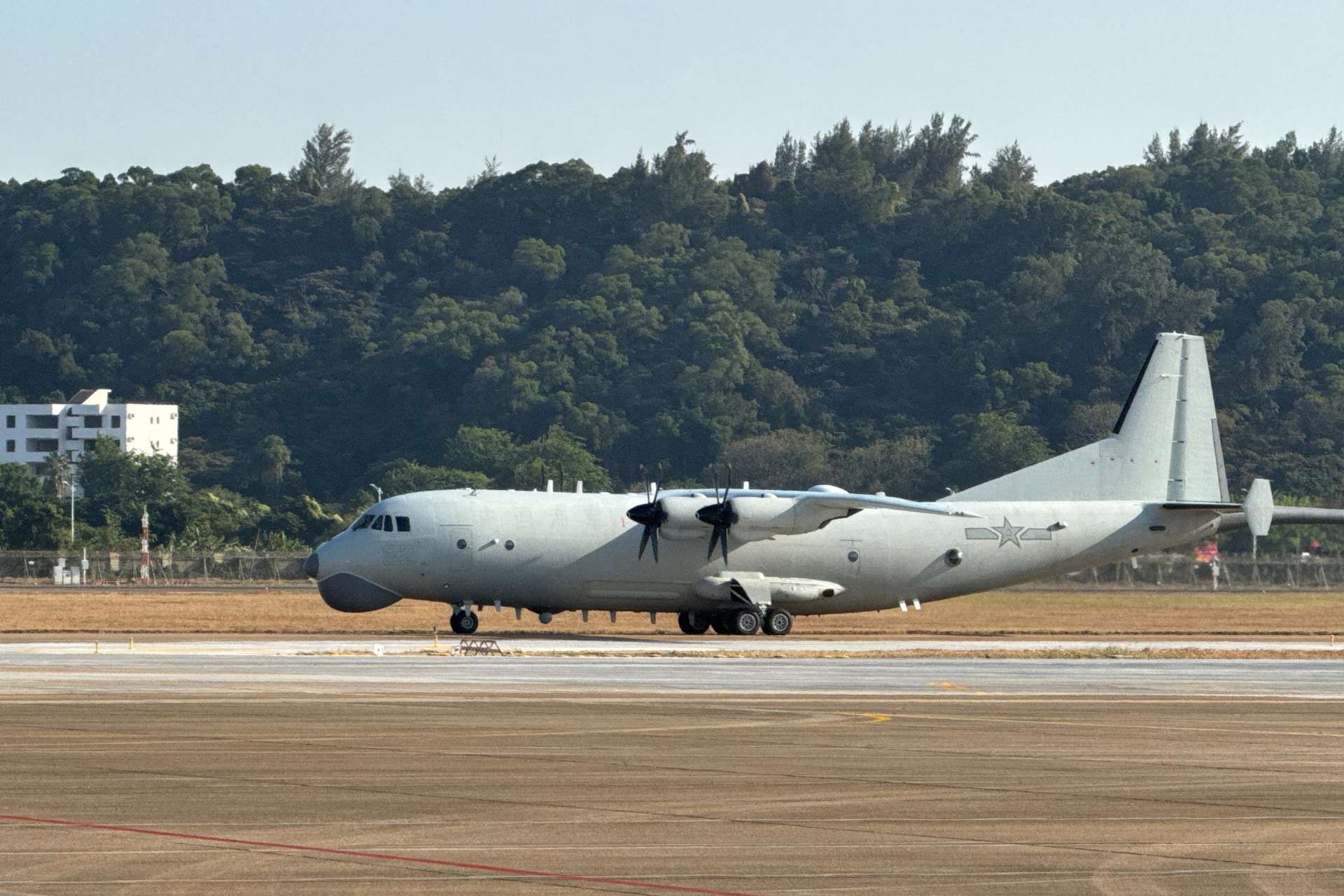Breaking News
Chinese Navy increases anti-submarine warfare with its new Y-8Q aircraft.
On November 7, the Chinese Navy’s Y-8Q anti-submarine patrol aircraft arrived in Zhuhai for a static display at the 15th China Airshow, as reported by official Chinese media. The Y-8Q, also known as Gaoxin-6, GX-6, Yun-8Q or Kongqian-200, represents China’s first generation of fixed-wing anti-submarine patrol aircraft. Developed by Shaanxi Aircraft Corporation, this aircraft is based on the Y-8F-600 platform, also designated as Y-9, and powered by four WJ-6C turboprop engines, each featuring six-bladed JL-4 composite propellers. Since its induction in 2015, the Chinese PLANAF (People’s Liberation Army Naval Air Force) has acquired over 50 units.
Follow Army Recognition on Google News at this link

The Y-8Q performs a range of anti-submarine roles, including patrol, inspection, on-call deployment, and target indication, thanks to a magnetic anomaly detector (MAD) extending from the tail. (Picture source: Weibo)
The Y-8Q performs a range of anti-submarine roles, including patrol, inspection, on-call deployment, and target indication. It is equipped with various specialized systems for these missions, including a spherical radar dome at the nose, a magnetic anomaly detector (MAD) extending from the tail, and a forward fuselage electro-optical turret that houses a forward-looking infrared (FLIR) camera, CCD/TV camera, and laser rangefinder. Openings on the aircraft allow for sonobuoy deployment (including SQ-4 and SQ-5 models), and a weapons bay can carry anti-submarine grenades, torpedoes, and depth charges.
Reports from military sources provide context for the Y-8Q’s capabilities relative to other models. The Y-8Q surpasses previous Chinese anti-submarine aircraft like the Be-6 and Shuihong-5 in its range, hovering time, and speed but has limitations in comparison to other international models. With a patrol range of approximately 6,000 to 7,000 kilometers and a maximum speed of around 700 km/h, the Y-8Q is somewhat constrained compared to the U.S. P-8A Poseidon’s 8,300-kilometer range and 910 km/h speed. Furthermore, while the P-8A is equipped with under-wing anti-ship missile capabilities, no evidence suggests that the Y-8Q currently has similar capacity.
Recent information from Chinese military media also confirms the Y-8Q’s anti-submarine weaponry, which includes self-guided aerial depth charges with sonar guidance. These depth charges, similar to Russia’s Zagon-2, are designed to be cost-effective, weighing around 120 kg with a 35 kg warhead. They incorporate a sonar-guided system and deploy a parachute for descent, enabling them to engage submarines at depths up to 600 meters. These charges provide a less expensive alternative to anti-submarine torpedoes and can be deployed in larger numbers, creating a pattern along a submarine’s anticipated route to restrict movement.
The Y-8Q’s arrival at Zhuhai for the airshow provides a broader view of China’s anti-submarine strategy and the role of the Y-8Q within it. Previously, the Chinese Navy had limited fixed-wing anti-submarine capabilities, relying on helicopters like the Z-9C, Ka-28, and Z-18. Although the Y-8Q operates on a transport-based platform, which restricts its performance, it fills a key role in shore-based anti-submarine operations with the benefit of increased patrol range and payload capacity compared to these helicopters. In recent years, PLAN has distributed the Y-8Q across its three major fleets—the East China Sea, South China Sea, and North Sea Fleets—to strengthen their shore-based anti-submarine capacities.
China’s military reports suggest a target deployment of between 100 and 200 Y-8Q units across its fleets. The development of a more advanced aircraft remains a long-term objective, with potential advancements to be drawn from domestic airframes such as the C919. Such an aircraft would aim to address current limitations by improving the Y-8Q’s patrol range, payload, and overall capability in anti-submarine operations.
In addition to its core anti-submarine functions, the Y-8Q has demonstrated secondary capabilities in recent military exercises, where it deployed depth charges against surface targets. This capability aligns with PLAN’s strategy to develop versatile, lower-cost systems to support its various maritime defense needs. Observers note that the Y-8Q may serve in this capacity until more advanced platforms become available, providing PLAN with continued coverage for shore-based anti-submarine patrols and operational flexibility in its current state.

Although the Y-8Q operates on a transport-based platform, which restricts its performance, it fills a key role in shore-based anti-submarine operations with the benefit of increased patrol range and payload capacity compared to military helicopters. (Picture source: Weibo)


























